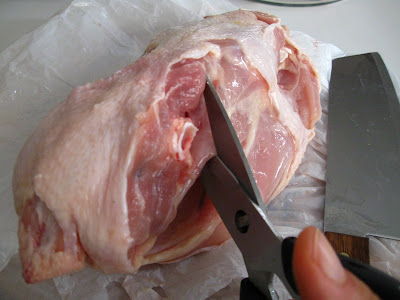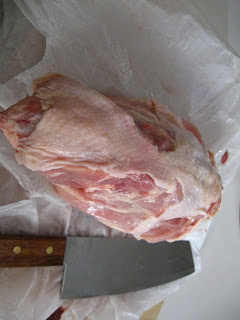I talk all the time about my penchant for frugality. Well, I say *frugal*, you say *cheap* - and I'm ok with that. It's been a loooooong time since I've not looked at the price tag when making a purchase. Whether it's 5, 5 thousand, or 50 thousand dollars, I know exactly how much I pay for everything I buy, and I think that has a lot to do with the resolution I made early on in life to live within my own means so others couldn't, or wouldn't try to, dictate my choices for me.
I'm that gal who knows the per pound price for ginger root when the cashier doesn't know the SKU. When I bought "COFFEE & A PASTRY $2.99" at Whole Foods and they charged me $3.50, I asked why. (Well, "because your 2 dollar *cookie* is not a $2.25 *pastry*" even though they're all in the same display case under the big, fat sign that fails to specify *select* pastries and we all know WF has lawyers to vet that kind of stuff.) If I seemed pennypinching in the inquiry, I accepted the reply without fuss. I try not to shoot messengers.
And no, I'm not one of those misers who separates the plies on my TP to make 2 rolls. I don't embarrass my kids by wearing my clothes from high school that not only look ridiculous but fit so poorly it hurts (which is not to say I don't embarrass them in other ways). I tip 20 percent. I don't keep every last pie tin from every last pie that someone's brought over for dinner in case there's a war and they start rationing out pie tins.
But I do think frugality is a virtue. One that often goes hand in hand with a certain kind of humility and one often lost - sometimes by necessity - to our post industrial, time is money culture. There is no shame in looking for, or recognizing and taking advantage of, value. And in the paradigm of cooking deliciously, there are few value propositions that exceed the good use of a whole chicken.
When I'm being specially resourceful, one whole, 5 pound bird (often available to me at $1/lb - I don't do the free-range, organic thing, but that's a discussion for another post - and it's not because I don't care about my health or the environment) yields:
- dinner for 4 adults with a variety of light and dark meat
- 6 cups of a light, all-purpose chicken stock to use throughout the week, (If you don't see the value in chicken stock, use it in lieu of water just once in your rice, soup or sauce.
- 2 or 3 meals for our wiener dog Honeydew
- 3 or 4 tablespoons of chicken fat, which is wonderful for adding a little flavor to sauteed vegetables or flaking up a savory empanada pastry, and
- enough chicken skin to fry up a little newspaper coneful of chicharrones to share with the Man over an icy cold lager
All these things will cost different amounts in different places, but the math is easy. A whole chicken, if you're willing to put in the elbow grease, will return your investment at least 7 or 8 fold in the final analysis.
But "What about my time?" you say. What about it? If you wanted quick and easy, you'd be cracking open a Hungry Girl book. She assembles delicious fat free, sugar free, flavor free meals in the time it takes to read one of my long winded posts. She'll save you all kinds of time. But I'm assuming if you've stuck with me this far, you don't think of your time in the kitchen as a sacrifice. Think of it another way: It's probably one of the least expensive and most useful hobbies you'll ever undertake.
Over due practice, you will save time. But assuming you're here because you love good food like I do (or you find the train wreck that is my life too compelling to avert your eyes), I enthusiastically encourage you to pass up that tray of thighs, or drums, or breasts (all of which cost at least double if not more), bag a whole chicken, arm yourself with a sharp knife and a pair of kitchen shears, and dissect the thing. It'll build your character, fatten your wallet, and satisfy your tastebuds.
DISSECTING CHICKEN & MAKING STOCK 101
1. Get a sharp knife, a pair of kitchen shears, a large pot, and a cutting board lined with a plastic grocery bag (makes for easier cleanup). Unwrap and drain your chicken in the sink, hind cavity side down, to get rid of all that funky raw chicken juice.
2) With the hind cavity facing you, (don't get all pervy on me now), pull out the neck and giblets. Neck goes into the stock pot. Giblets go in a separate bowl for whatever other purpose (usually a snack for me - I HEART chicken offal like nobody's business.)
3)With your shears, remove what I call the buttflap of fat from the back sides of the chicken, cutting out a V on both sides like so:
4) Move on to the quarters (the thigh + drum piece). Pull one quarter away from the body and cut through the skin and about 1/4" of flesh. Pull the quarter another couple of inches until you hear a pop. At that point, you should be able to see the joint. Cut through the middle of the joint as you continue to pull on the quarter. Once you're through the joint, you'll be able to cut through the flesh and sever the quarter from the body easily.
5) Do the same with the wings:
6) Now, pulling up on the bottom half of the back near the tail (often called the Pope's nose - I don't know why), take your shears and cut through the thin rib bones on both sides.
 |
| My left hand was busy taking this pic. Otherwise, I'd have been doing what I told you to do. |
You can snip right through it and throw that piece in the pot too, and your chicken will look like this:
7) Same jobby on the upper back portion and chuck that into the pot as well:
8) Flip the remaining whole breast and snip away what I call the boobflap fat in a V and put that in the pot too.
 |
| Check that trachea or epiglottis or whatever that is... |
9) Feeling the center for the bone, cut slowly into the flesh on each side, keeping the knife as close to the bone as possible, to release each chicken boob from the breastplate.
Continue cutting slowly, knife against the bone, and remove each breast. Throw what's left into the pot.
!VOILA! You've dissected a whole chicken and should feel bloody righteous about now if you've never done it before.
 |
| Dissected chicken - *WOOT!!!* |
shinae
P.S. I do know the difference between *cookies* and *pastries*, but I wouldn't be the first one to call hokey on Whole Foods' pricing/signage practices.
06.24.11 - Chicken stock recipe posted here.



















I do this with duck regularly, ending up with two duck legs, two boneless breasts, a carcass for stock and fat/skin for rendering into tasty duckfat . . . .
ReplyDeleteDuck fat. Mmmmmm... :))))
DeleteIncredibly useful post, instructions and pictures. I have never had the courage to disect a bird, but I might just do it with the help of this
ReplyDelete